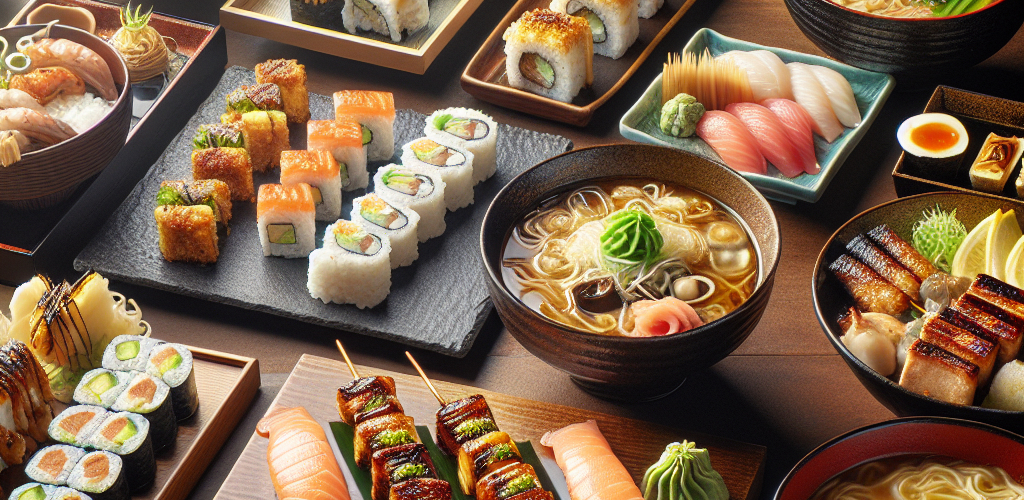“Exploring Japanese Cuisine”
2024년 10월 14일

Title: “Exploring Japanese Cuisine”_1
1. Introduction to Japanese Cuisine
2. Popular Japanese Dishes
3. Unique Ingredients in Japanese Cuisine
4. Cultural Significance of Food in Japan
5. Dining Etiquette in Japan
Discover the diverse and flavorful world of Japanese cuisine!
Introduction to Japanese Cuisine
Japanese cuisine, known as washoku, is celebrated worldwide for its emphasis on fresh ingredients and meticulous preparation. With a history spanning thousands of years, Japanese food reflects a deep connection to nature and seasonality. Umami, the fifth basic taste, plays a crucial role in Japanese cooking, creating depth and richness in dishes. From delicate sushi and sashimi to hearty ramen and comforting donburi bowls, Japanese cuisine offers a wide range of flavors and textures, showcasing a perfect balance of taste, presentation, and nutrition.
Popular Japanese Dishes
When exploring Japanese cuisine, sushi often comes to mind, featuring vinegared rice topped with fresh seafood or other ingredients. Ramen, a beloved noodle soup, boasts a rich broth and customizable toppings like chashu pork and soft-boiled eggs. Tempura showcases delicate, crispy battered seafood and vegetables. Yakitori, grilled skewers of chicken, is a popular izakaya dish. Additionally, Japanese kaiseki offers a multi-course fine dining experience, highlighting seasonal and regional ingredients in an artful presentation.
Unique Ingredients in Japanese Cuisine
Japanese cuisine incorporates a myriad of unique ingredients that contribute to its distinct flavors. Wasabi, a pungent green paste, adds a fiery kick to dishes like sushi. Matcha, finely ground green tea powder, is used in traditional tea ceremonies and as a flavoring in sweets. Dashi, a flavorful broth made from kombu seaweed and bonito flakes, forms the base of many Japanese soups and stews. Miso, a fermented soybean paste, lends a deep umami flavor to soups, marinades, and dressings. These ingredients, along with staples like rice and soy sauce, are fundamental to Japanese cuisine.
Cultural Significance of Food in Japan
Food holds a profound cultural significance in Japan, where meals are viewed as a harmonious blend of flavors, textures, and colors. The concept of itadakimasu, expressing gratitude before a meal, reflects respect for the food and those involved in its preparation. Traditional Japanese dishes often showcase seasonal ingredients, honoring the changing landscapes and agricultural practices. Moreover, omotenashi, the spirit of hospitality, is deeply ingrained in Japanese dining experiences, with chefs and hosts striving to provide exceptional service and create memorable moments for guests. Food in Japan is not merely sustenance but a means of connection, celebration, and expression of artistry.
Dining Etiquette in Japan
Japanese dining etiquette plays a significant role in the culinary experience, emphasizing respect, cleanliness, and order. When dining in Japan, it is customary to say “itadakimasu” before eating as a sign of gratitude. Chopsticks should be used properly, avoiding pointing, waving, or sticking them upright in rice, as these actions are considered impolite. Slurping noodles, particularly ramen, is not only acceptable but a sign of enjoying the meal. Refilling others’ glasses before yours and not wasting food are also important customs. Lastly, saying “gochisousama deshita” after a meal expresses thanks to the host or chef for the delicious food.